All owners of aquarium fish know how important it is to keep everything clean. Dirty water can not only harm the health of the inhabitants, but even destroy them. It is much easier to keep the aquarium clean if there are cleaner fish among the inhabitants. They are unpretentious in care and get along with most other species.

What are they needed for?
On the walls and bottom of the aquarium, an algae bloom forms over time. This process reduces the light inside and spoils the look. Nevertheless, everything is quite natural and predictable. In the natural microflora there are many unicellular green algae that do not cease to multiply. Fish "orderlies" feed on these microorganisms.
The inhabitants cannot clean and maintain the state of the aquarium alone. Manual cleaning and the use of special products are still necessary. Cleaners eat algae only when they are hungry, but it is strictly forbidden to specially feed the fish. Aquarium residents with age can completely stop devoting time to cleaning. Many species of fish well clean the aquarium from green plaque. All of them relate to otocyclus.
In addition, you can use shrimp and snails, but in small quantities. It is important to carry out a water change and manual cleaning regularly so that all residents feel comfortable.
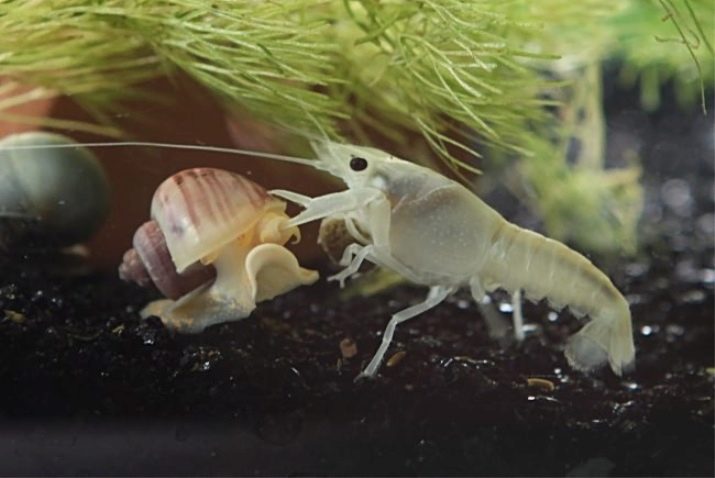
Varieties
Quite a lot of fish belong to the category of cleaners. Below is a list of the names of the most popular fish for a home aquarium.
Siamese Algae Eater (SAE)
Fish perfectly destroys the vegetation in the aquarium and will become a good decoration.Siamese algae eater can be aggressive towards fish of its species, but it is completely neutral to others. The best living conditions are considered to be water temperature + 24– + 26 ° С.
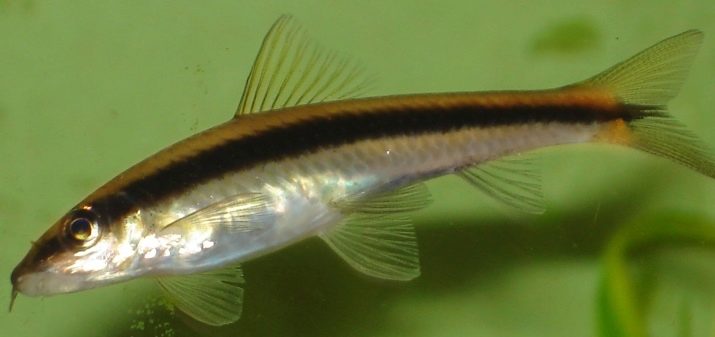
Som otocinclus
This is a fairly popular fish from the chain of mail. Som copes well with the task of a cleaner, which earned universal sympathy.. Its maintenance does not require special frills; in relation to other fish, it behaves calmly. It is noteworthy that Such catfish cleans not only the walls of the aquarium and decorative elements, but also large algae. He can feed himself on his own, but treats with vegetable feed will be useful.

Antsistrus or catfish sucker
Such fish is found in most artificial reservoirs and aquariums. Active sanitary activity, unpretentiousness and high resilience make the catfish literally mega in demand. It is noteworthy that the structure of the mouth really visually resembles a suction cup. Antsistrus looks one of the strangest fish. There are small growths on the head, and the color is dark, which in a tandem with a secretive lifestyle creates a rather mysterious role.
Under optimal conditions, fish can live for about 7 years.
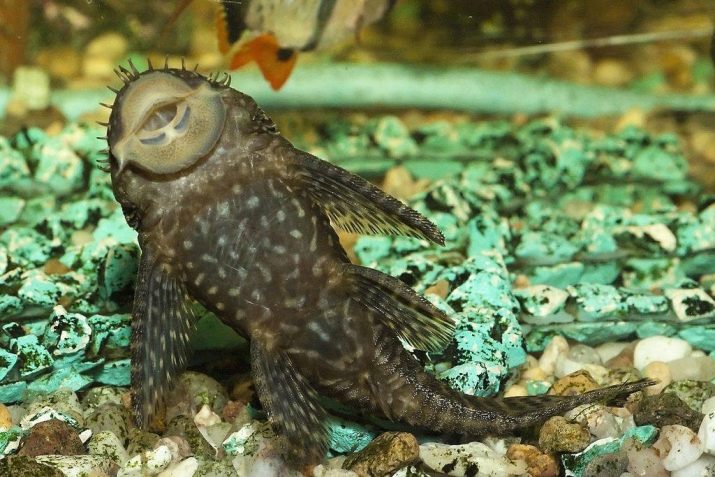
Pterigoplicht or brocade catfish
Many aquarium owners choose these fish because of their attractiveness. Brown catfish has quite developed fins on the back and protruding nostrils. It is noteworthy that the fish can grow up to 55 cm in 15–20 years of life. Friendly character cleaner feels great with any neighbors. However, in slow fish, such as angelfish, catfish can gnaw the scales. The aquarium for such a resident should be at least 400 liters. At the bottom you need to place several decorative snags.
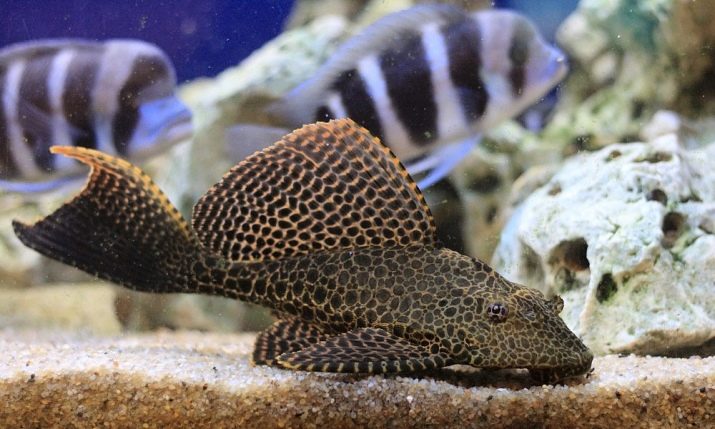
Panak or King Som
Fish with a bright color from the loricaria family. They are quite aggressive, defend their territory. The aquarium must have decorative elements at the bottom. Catfish will choose one shelter as their home. Periodically, you need to check whether the fish is stuck in the scenery, otherwise the catfish may die. The omnivorous fish loves to eat greens and lettuce. First they need to be doused with boiling water.
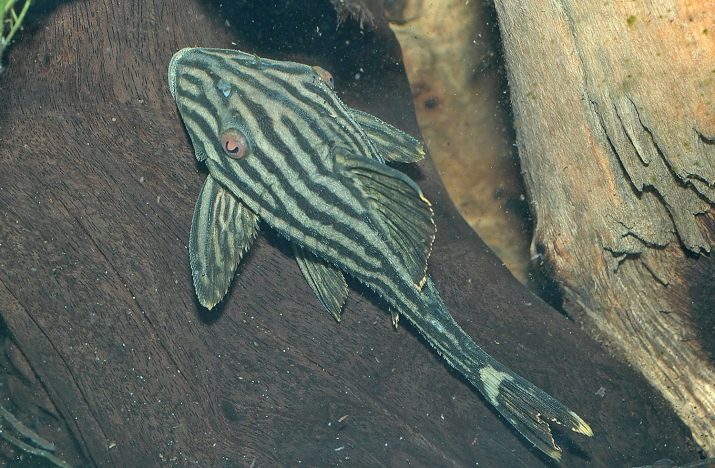
Mollinesia (Poecilia)
Viviparous fish eat green filamentous algae. Mollinesia needs a large open space with dense algae. It can clean the aquarium from unwanted algae as well as young shoots. True, this happens only as a result of a lack of food.

Girinoheylus
A large cleaner has a small list of varieties. In length, the fish grows to 15 cm, therefore the aquarium should be pretty big. To breed together with other species is quite dangerous, they are aggressive. They can attack not only relatives, but also other species. As a result of attacks on fish, scales are damaged, which is noticeable to the naked eye. It eats plant foods, it can be fed with ordinary herbs.
Most of all, representatives of the species love fresh salad and spinach. Fish live long, and reach puberty only at the age of 3 years. However, breeding such cleaners is quite difficult and not recommended for beginners.

Multicolored guppies
This is one of the most unpretentious fish. Experts say that for 1 individual, only 1.5 liters of water is enough. The fish are small, they can be settled in any aquarium. Have to install additional artificial lighting, since guppies need a long daylight hours of at least 10 hours. Food is not limited to algae, they eat dry food, slices of bread and even meat.
To feel full, you need a large amount of vegetation in the aquarium. Water temperature should not exceed + 20 ° С.

Sturisoma
This type of chain catfish has a rather original appearance. The elongated body and long tail visually resembles a spindle.Representatives of the species are unpretentious in care. They grow quite large, about 15-20 cm in length over 10 years of life. The largest representatives of the species are considered golden sturisomes.
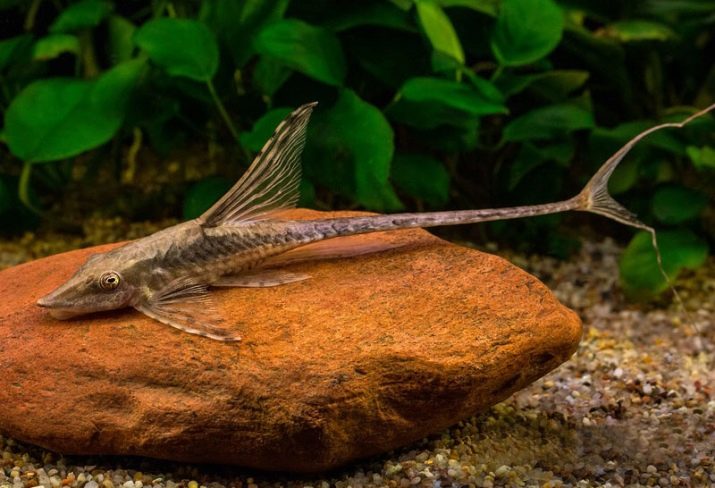
Loricaria
Externally, the representatives of the species are quite original, have a very long tail and an elongated body. They slightly resemble the cleaners described above. Unpretentious orderlies grow up to 15-18 cm, maximally live in an aquarium of about 9-10 years.
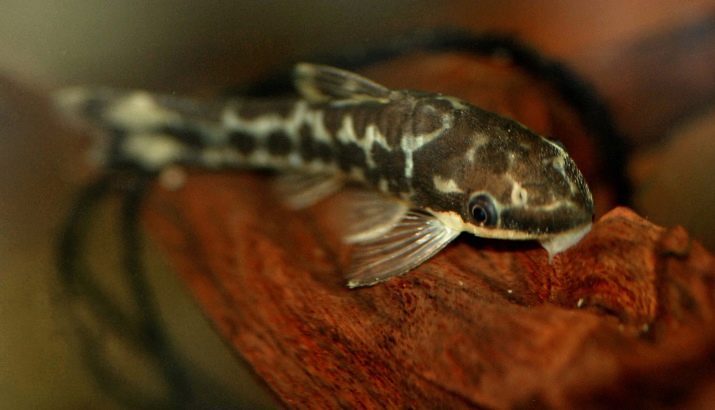
Compatibility
The life and comfort of fish cleaners are directly dependent on the size of the pasture. They can fight very aggressively for food. The life of neighbors can be significantly complicated if they encroach on the territory of the "orderly" aquarium. Ototsinklus and SAE quietly get along with each other, but this is considered a unique case. This is all due to different food preferences, they do not see competition in this case.
It is impossible to combine several different types of fish-cleaners in one aquarium. Girinohejlusy and SAE or Antsistrusy and labeo - these are fierce enemies who can never live together. It is worth paying attention to other important compatibility features.
- Keeping cleaners with cichlids is not worth it. The latter are predatory and will attack the "orderlies". The only exceptions are Siamese flying foxes. They themselves are quite aggressive and large, they can defend themselves.
- The best neighbors for fish cleaners are peaceful species. And it is better to choose the inhabitants of small or medium. Preferably, the fish do not have an interest in algae. So the cleaners will not suffer from attacks on their territory.
- In a small aquarium with few shelters, Siamese algae eaters will sort things out. But girinoheylusy ready to kill their relatives.
- For aggressive slaves you need to select large neighbors who can defend themselves. If the cleaner is fast, then the other inhabitants must be active.
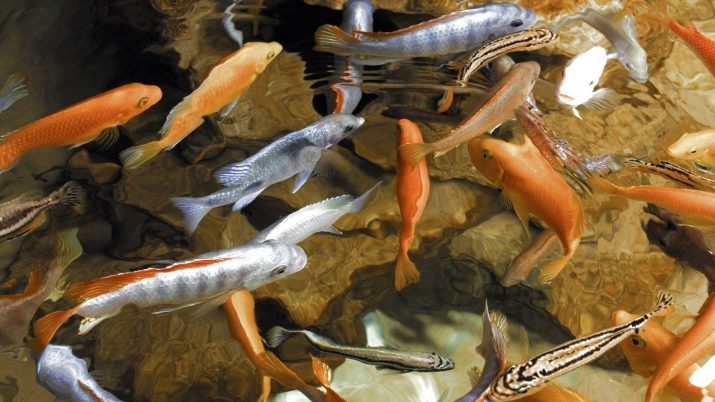
Cleaner fish can help people and keep the aquarium clean for longer. It is important to combine neighbors correctly so as not to turn a decorative vessel into a battlefield. Provide a large number of different decor, including houses and snags. In this case, the "orderlies" will be able to determine their territory and not attack outside it.
Maintenance and care
The aquarium for keeping cleaners and other fish should be quite large. For some species - at least 400 liters. So the "orderly" will get his own place and enough food. Most species feel comfortable in the water at a temperature of + 18– + 24 ° C and hardness of 6–12. Acidity should be neutral, but slight deviations in one direction will not lead to serious negative consequences.
The water in the aquarium must be fresh. Otherwise, the cleaners will die. Soma can breathe skin, and atmospheric air, so they are completely unpretentious in the matter of oxygen regimen. The same situation with other fish that eat algae. For most cleaners, it does not matter what soil is at the bottom of the aquarium.

Be sure to equip a shelter for fish cleaner. You can use stones, driftwood, decorative houses and castles. Even artificial algae can please the main resident.
Sitting live plants in an aquarium requires a thoughtful approach. Some orderlies can eat them. Large algae with developed roots can be used.
It is important to limit the living space of the fish cleaner. Other neighbors should not encroach on its territory. Sometimes, even quite peaceful fish start chasing others around the aquarium to show who is the master.
Make sure that the cleaner has enough food. If the fish is herbivorous, then feed it with lettuce or other herbs. If the cleaner is predator, then hunger can force him to eat small neighbors.
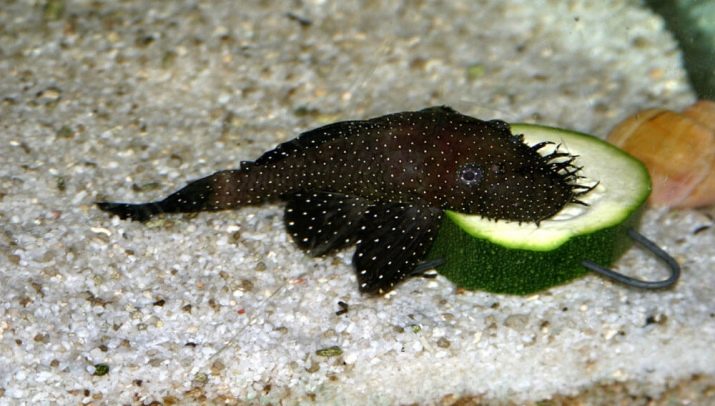
About the cleaners (orderlies) of the aquarium, see the next video.










